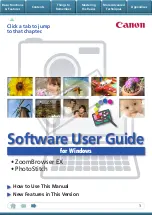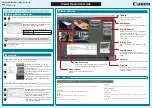
Event Management System/Logging
ExtremeWare XOS 11.3 Concepts Guide
207
If you set the current session format using the following command:
configure log target session format timestamp seconds date mm-dd-yyyy event-name
component
The same example would appear as:
06/25/2004 22:49:10 <dm> PowerSupply:4 Powered On
To provide some detailed information to technical support, set the current session format using the
following command:
configure log target session format timestamp hundredths date mmm-dd event-name
condition process-name source-line
The same example then appears as:
Jun 25 22:49:10.63 <dm.info> devmgr: (dm.c:134) PowerSupply:4 Powered On
Displaying Real-Time Log Messages
You can configure the system to maintain a running real-time display of log messages on the console
display or on a (Telnet) session. To turn on the log display on the console, use the following command:
enable log target console
This setting may be saved to the FLASH configuration and is restored on boot-up (to the console
display session).
To turn on log display for the current session:
enable log target session
This setting only affects the current session and is lost when you log off the session.
The messages that are displayed depend on the configuration and format of the target. For information
on message filtering, see
“Filtering Events Sent to Targets” on page 199
. for information on message
formatting, see
“Formatting Event Messages” on page 206
.
Displaying Event Logs
The log stored in the memory buffer and the NVRAM can be displayed on the current session (either
the console display or telnet). To display the log, use the following command:
show log {messages [memory-buffer | nvram]} {events {<event-condition> | <event-
component>]} {<severity> {only}} {starting [date <date> time <time> | date <date> |
time <time>]} {ending [date <date> time <time> | date <date> | time <time>]} {match
<regex>} {chronological}
You can use many options to select those log entries of interest. You can select to display only those
messages that conform to the specified:
●
Severity
●
Starting and ending date and time
●
Match expression
Summary of Contents for ExtremeWare XOS 11.3
Page 20: ...Contents ExtremeWare XOS 11 3 Concepts Guide 20...
Page 25: ...1 Using ExtremeWare XOS...
Page 26: ......
Page 38: ...ExtremeWare XOS Overview ExtremeWare XOS 11 3 Concepts Guide 38...
Page 58: ...Accessing the Switch ExtremeWare XOS 11 3 Concepts Guide 58...
Page 146: ...Configuring Slots and Ports on a Switch ExtremeWare XOS 11 3 Concepts Guide 146...
Page 218: ...Status Monitoring and Statistics ExtremeWare XOS 11 3 Concepts Guide 218...
Page 240: ...Virtual LANs ExtremeWare XOS 11 3 Concepts Guide 240...
Page 248: ...Virtual Routers ExtremeWare XOS 11 3 Concepts Guide 248...
Page 278: ...Access Lists ACLs ExtremeWare XOS 11 3 Concepts Guide 278...
Page 288: ...Routing Policies ExtremeWare XOS 11 3 Concepts Guide 288 entry deny_rest if then deny...
Page 344: ...Security ExtremeWare XOS 11 3 Concepts Guide 344...
Page 393: ...2 Using Switching and Routing Protocols...
Page 394: ......
Page 454: ...Spanning Tree Protocol ExtremeWare XOS 11 3 Concepts Guide 454...
Page 484: ...Extreme Standby Router Protocol ExtremeWare XOS 11 3 Concepts Guide 484...
Page 514: ...IPv4 Unicast Routing ExtremeWare XOS 11 3 Concepts Guide 514...
Page 530: ...IPv6 Unicast Routing ExtremeWare XOS 11 3 Concepts Guide 530...
Page 538: ...RIP ExtremeWare XOS 11 3 Concepts Guide 538...
Page 556: ...OSPF ExtremeWare XOS 11 3 Concepts Guide 556...
Page 566: ...OSPFv3 ExtremeWare XOS 11 3 Concepts Guide 566...
Page 589: ...3 Appendixes...
Page 590: ......
Page 640: ...CNA Agent ExtremeWare XOS 11 3 Concepts Guide 640...
Page 670: ...Glossary ExtremeWare XOS 11 3 Concepts Guide 670...
Page 698: ...Index ExtremeWare XOS 11 3 Concepts Guide 698...
















































